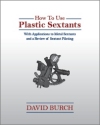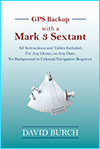 |
 |
 |
||||
|
PLASTIC SEXTANTS
Starpath School of Navigation is one of the world's leading resources on all aspects of celestial navigation, including use of all types of sextants, but in many ways we are an even more unique resource when it comes to plastic sextants. We have used them for decades, studied their properties, and written special step-by-step instructions on how to use them—that is, how to get the most out of these very economical, well-made instruments from Davis Instruments, in California. We have two books devoted to the use of plastic sextants.
Needless to say, we would be the first to recommend a metal sextant for your primary celestial navigation needs—they are more accurate and easier to use. But the all too frequent disparagement of plastic sextants is mostly misplaced, and it distracts from their true value. All that one hears, for example, about plastic sextants melting in the sun is much like the stories we hear about sharks eating the taffrail logs. When those empty log lines are pulled in and found all frayed at the end as if "bitten off," one is almost certainly looking at the results of lack of maintenance, not the work of a shark. We would not leave a thousand-dollar metal sextant sitting out in the sun, so why would we mistreat any other instrument we rely upon for navigation. Treated well, they will last a lifetime, and properly used, they could take you around the world.
We have several testimonials to that in our books.
And this is not to mention that when it comes to coastal piloting with a sextant—which is often the quickest, easiest, and most accurate means of locating position in sight of land—these plastic sextants are not only more than adequate for the job, they are even the instrument of choice in most cases. If you have not used this piloting technique, then the modest investment in a Mark 3 sextant will yield a wonderful reward to you.
|
|||
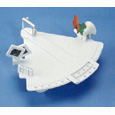 |
The "Lifeboat sextant," not only good for learning and as a back up, but actually the sextant of choice for coastal piloting. This is the least expensive sextant in the world that actually can be used for practical navigation.
MK3 Manual. |
||
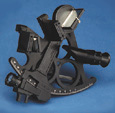 |
This is the standard model of the Davis sextant group. Comes with telescope (not shown) and traditional split-view mirror and rigid carrying case. MK15 Manual. |
||
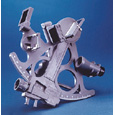 |
Includes lighted dials and a "full-view" mirror as standard equipment, plus rigid carrying case. MK25 Manual. | ||
|
Rigid plastic case, designed for all three models Mark 15 mirror set to replace the Mark 25 mirrors Artificical horizon (for use with any sextant) | |||
